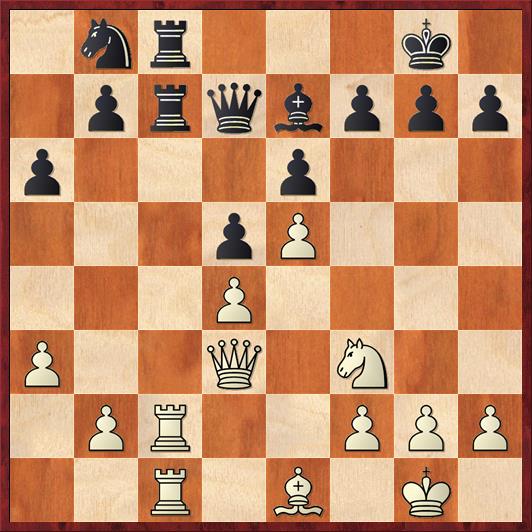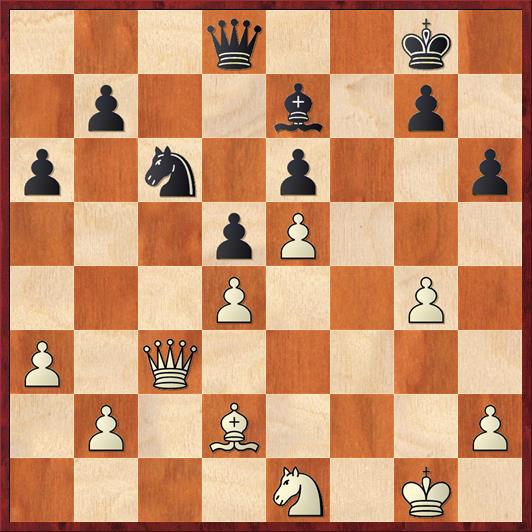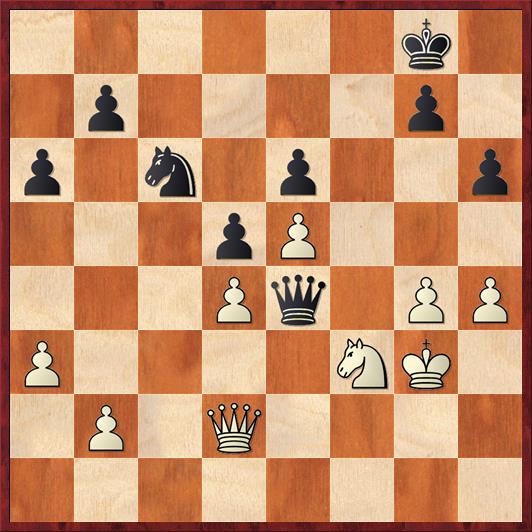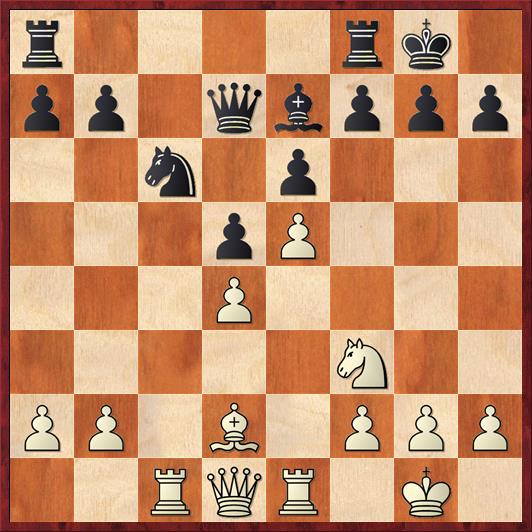Recently I wrote a post (Checkmate Patterns, Moral Victories) about a game by GM Jonathan Tisdall, and I was pleased and delighted when Tisdall himself sent in a comment. That wasn’t the first time that my blog has gotten a grandmaster comment, at least indirectly. Three years ago, in 2013, I wrote a post called Rock, Paper, Scissors, to which GM Sam Shankland sent an extremely insightful comment. He sent the comment to me by e-mail instead of using the comment button, but I wrote a followup post Rock, Paper, Scissors (part two) that entered it into the official record of this blog.
This morning I started thinking: What if I wrote a blog post that was deliberately intended to get a response from a particular grandmaster? Would it work? Well, the only way to find out is to give it a try!
Here is a letter to Hikaru Nakamura, asking him for his thoughts about a game that is of some interest to me: Dana Mackenzie — Hikaru Nakamura, U.S. Open 1999. At the time we played the game, he was an 11-year-old but already rated 2328. I was, well, 40 years old and rated 2111. We met in the second-to-last round, when we each had a score of 4½ out of 7. The fact that I lost the game was no surprise to me; I’ve lost to 11-year-olds before. However, the way I lost made a deep impression on me. There were no brilliant combinations, as you might expect from Nakamura today. Instead it was just a very calm positional dissection. As I wrote then in my notes to the game (not knowing how great Nakamura would become): “Throughout the game, Black’s play was a model of avoiding risks while capitalizing on his positional advantage. It’s amazing to see an 11-year-old play this way.”
Dear Hikaru,
Recently I’ve been looking at a game that we played in 1999 and I was wondering if I could ask you a few questions about it. Most of all, I’m curious if you remember the game and whether you learned anything from it.
The game took place in the 1999 U.S. Open. I was White, you were Black, and the game started 1. e4 c5 2. Nf3 d6 3. Bb5+ Bd7 4. Bxd7+ Qxd7 5. O-O Nc6 6. c3 Nf6 7. Re1 e6 8. d4 cd 9. cd d5 10. e5 Ne4 11. Nbd2 Nxd2 12. Bxd2 Be7 13. Rc1 O-O.
Position after 13. … O-O. White to move.
FEN: r4rk1/pp1qbppp/2n1p3/3pP3/3P4/5N2/PP1B1PPP/2RQR1K1 w – – 0 14
So far, very standard. When White avoids such dynamic ideas as 5. c4 or 7. d4!?, which involve pawn sacrifices, this line is considered to be somewhat drawish. Did the possibility of conceding a draw to a player rated 200 points lower concern you at all? Were you hoping that I would play the gambit lines?
For the record, I wasn’t particularly trying for a draw; this is a variation that I normally played at the time. However, my theoretical knowledge was not deep, and at this point I did not know what White’s plan should be. Today I looked it up on ChessBase and saw that the most popular move for White is 14. Rc3, which scores about 56%. This makes a lot of sense. The move Rc3 addresses many problems. It frees up the square c1 for the bishop (after White plays 15. a3, of course). The rook can swing over to the kingside for an attack (which is where White should be directing his attention; the pawn formation screams, “Kingside attack”). Also, in a pinch the rook can defend the d-pawn. Conceivably White could also double on the c-file if he wants.
Did you know anything about the position after 14. Rc3? Do you still like Black’s chances?
The actual game continued 14. Re2?! Rfc8 15. Be1 Rc7 16. R2c2 R8c8 17. a3 a6 18. Qd3 Nb8. The next two moves really changed the game.
 Position after 18. … Nb8. White to move.
Position after 18. … Nb8. White to move.
FEN: 1nr3k1/1prqbppp/p3p3/3pP3/3P4/P2Q1N2/1PR2PPP/2R1B1K1 w – – 0 19
Here I played the passive 19. Bd2. I bitterly regret this move. The bishop is like a ball and chain on my position, and this was my chance to activate it with 19. Ba5! After 19. … Rxc2 (possible is 19. … Rc6, but I think White is fine after 20. Bb6) 20. Rxc2 Rxc2 21. Qxc2 Qc6 22. Qxc6 Nxc6 (22. … bc?! 23. b4 with a bind) 23. Bb6 my bishop is outside the pawn chain, doing good work, and I think I should have no trouble holding a draw.
But looking at this line, it strikes me that your move 17. … a6 actually made this possible, by giving me a nice square at b6 for the bishop. Would you agree that the combination of 17. … a6 and 18. … Nb8 was a little bit inaccurate for Black?
You replied 19. … h6 and then I went all cuckoo and played 20. g4? The psychology of this move is interesting. Up to this point I have played boring, uncreative chess. Now all of a sudden I decide that I don’t like my lack of activity, and I play an “active” move that creates terrible weaknesses. Before this move my position was solid but boring. After this move I might still be alive — the computer says I’m close to equal — but my position is like a leaky boat, and I’ve got to keep my thumbs in all the leaks.
I’m not sure whether this move requires any comment from you, but I’d be interested in your thought process at the time and how you go about responding to a move like 20. g4? It seems to me that what you did was very instructive. You didn’t try to “refute” it, but just kept on playing calm moves that emphasized the looseness of my position: 20. … Rxc2 21. Rxc2 Rxc2 22. Qxc2 Nc6 23. Qc3 Qd8 24. Ne1 f6 25. f4 fe 26. fe. (Diagram.)
 Position after 26. fe. Black to move.
Position after 26. fe. Black to move.
FEN: 3q2k1/1p2b1p1/p1n1p2p/3pP3/3P2P1/P1Q5/1P1B3P/4N1K1 b – – 0 26
In this position you played a remarkable move, and even now I’m not sure whether it’s right or not. I would be very interested, and I think my readers would be very interested, in your thoughts on it.
You played 26. … Bg5!?, a move that I was absolutely not expecting. It seems as if this does White a great favor, by exchanging off his bad bishop. I think that very few amateurs would even consider such a move. However, I do think there is some point to it. While it does relieve me of an ineffective piece, the move emphasizes the passivity of my two remaining pieces, and it also opens lines that Black’s queen can use to penetrate the White position.
Would you still play this move today? Should we pay any attention to Rybka’s assessment, which is that the position is almost dead equal after the trade of bishops? Did you consider this the only way for Black to play for a win?
The game continued 27. Nf3 Bxd2 28. Qxd2 Qf8 29. Kg2 Qf7 30. Kg3. After the game, with 20-20 hindsight, I thought that this was the losing move and that I should have tried to contest the b1-h7 diagonal with 30. Qd3. Rybka agrees that 30. Qd3 leads to equality after 30. … Qf4 31. h3! (but not 31. Qg6? Kf8! indirectly defending the e-pawn because of 32. Qxe6?? Qxf3! 33. Kxf3 Nxd4+). However, Rybka also says that the move I played should equalize, so I haven’t given it a question mark.
You played 30. … Qg6! 31. h4 Qe4 and now I made what truly was the losing move.
 Position after 31. … Qe4. White to move.
Position after 31. … Qe4. White to move.
FEN: 3q2k1/1p2b1p1/p1n1p2p/3pP3/3P2P1/P1Q5/1P1B3P/4N1K1 b – – 0 26
Here I played 32. g5??, a move that looks unforgiveable to me now. White voluntarily restricts the mobility of his pieces and gift-wraps the f5 square for Black’s knight. It’s hard to fathom how I could have even for a moment thought that such a move was the right idea. This may be why I haven’t shown this game to my blog readers before. Moves like 19. Bd2 and 32. g5 seem to me not only bad but uncharacteristic of my chess.
After the correct move, 32. h5, White’s position is still extremely passive, but how is Black to break through? Black’s knight has no obvious routes into White’s position, except perhaps c6-e7-c8-b6-c4, but this is so slow that I think White will have no problem deterring it. Black also has no pawn breaks except … g5, but this move weakens Black’s kingside more than it weakens White’s, after the en passant capture. Finally, I would like to point out that White doesn’t just have to “sit” after 32. h5. After h5, a further g5-g6 break becomes a real possibility.
In sum, I feel that the position after 32. h5 is one where Black has “maxed out.” His position is optically impressive, but he has no way to improve it. Do you agree with this assessment? If not, how can Black play for a win here? If you agree, did Black make any mistakes earlier (perhaps the exchange of f-pawns?) that took the dynamic potential out of the position?
The rest of the game is pretty straightforward, but I will give it for the benefit of my blog readers. I like the confidence that you had in your ability to win the knight endgame, so that you were not afraid to offer queen trades. To me this shows an unusual maturity for an 11-year-old!
After 32. g5?? the game concluded 32. … h5! 33. Qf4 Qb1 34. Nd2? Qd3+?! (A slight inaccuracy, as 34. … Qg1+ is completely winning. But Black has a plan, and instead of winning material he just sticks to the plan.) 35. Nf3 Ne7 36. Qc1 Nf5+ 37. Kf2 Qc4! 38. Qd2 g6 39. Qa5 Qc2+ 40. Nd2 b6! 41. Qb4 Nxh4 42. Ke2 Qc7 43. Qa4 Nf5 44. Qe8+ Kh7 45. Kd3 Ng7 (A nice, unassailable formation for Black’s kingside pieces) 46. Qf8 Qd7 47. Qd6 Qb5+ 48. Kc2 h4 49. Qf8 Qe2 50. Qf3 Qxf3 51. Nxf3 Nf5 52. Kd3 h3 53. Kc3 Kg7 (Even here Black could have played his eventual winning plan of 53. … Ng3. But he is in no hurry, and takes his time to improve his king position before proceeding.) 54. Kd3 Kf7 55. b3 Ke7 56. Kc3 Kd7 57. Kd3 Kc6 58. Kc3 Ng3 59. Nh2 Ne4+ 60. resigns.
Thanks for taking time out of your busy schedule to take a look at this game again. My readers and I will be interested in your thoughts!
Yours truly,
Dana
P.S. (Added April 29.) Congratulations on your win in the Ultimate Blitz Challenge! I hope you enjoy your short breather from the tournament grind.




{ 3 comments… read them below or add one }
http://www.chessgames.com/perl/chessgame?gid=1172409
Hey Dana,
If Hikaru responds and then sends you a bill for “coaching”, will you pay it? I just thought that would be a funny thing for him to do.
In a similar vein to your post, I once ran a tournament in Santa Cruz and in the Chess Life tournament announcement I offered a free entry to all Grandmasters named Peter Biyiasas. He didn’t show up.
Re Bg5!? I’m reminded of the “bad bishops defend good pawns” comment by Suba many years ago.
Paul D